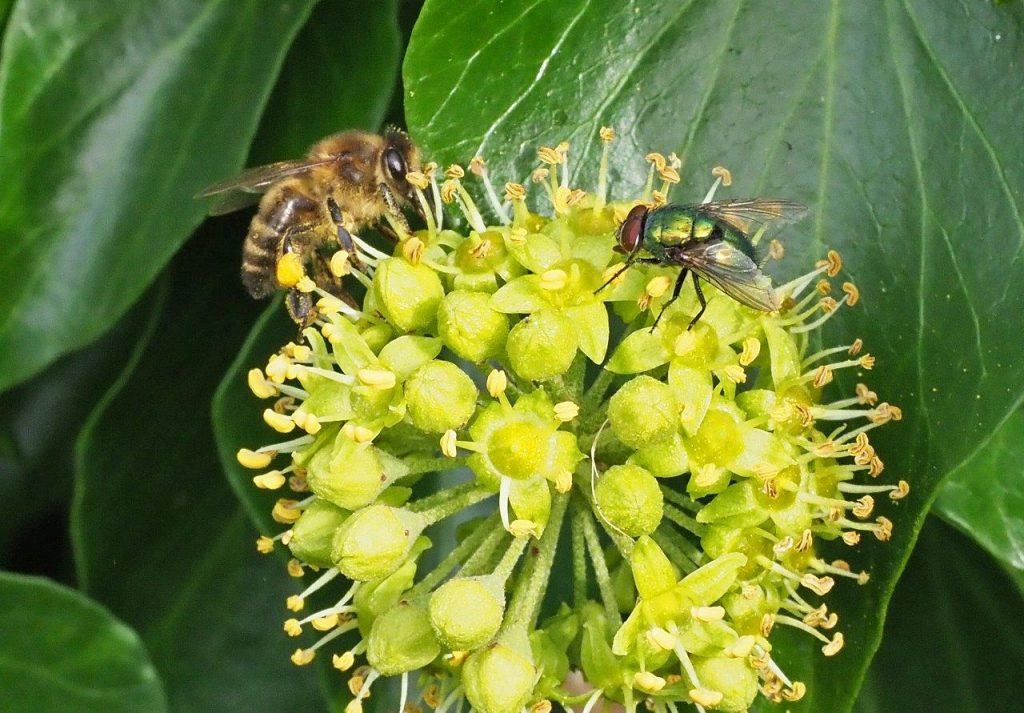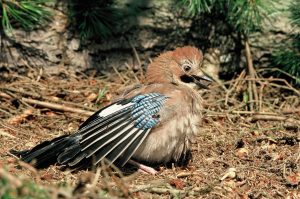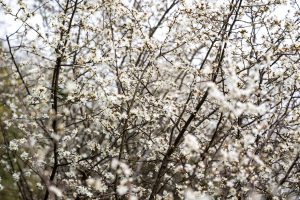Creating diversity in gardens and larger patches of land
We’ve written much on the subject of wildlife gardening over the years, with a number of us at Vine House Farm and guest bloggers contributing. But here our very own Nicolas Watts gives his personal take on the subject, and also talks about increasing biodiversity on larger pieces of land . . .
Most of us would like to see more wildlife, especially birds, in our gardens, and we also have some superb insects that are well worth seeing. For this to happen though, we must create more diversity in the form of flowers, bushes, water and trees – all of which will of course take time to get established.
A good starter is to feed the birds but bird food does not produce insects which are the basis of life. All birds have to feed their young on moist food as they cannot take them water; this moist food has to be insects or unripe seeds. Most insects live on plants, many of them specific to one or two plant species, so the more different plants you have in your garden the more species of insects you will have and especially if you have native plants and a pond. However small your garden is you should ideally still make room for a pond.
If you’re lucky enough to have an acre of ground or even 5 acres, you could dig quite a big pond. You may need to get some advice about whether you should have a liner in your pond as you don’t want your pond to dry out in the summer. A liner will give you a more stable water level; maybe you could direct the water from your house roof into the pond as I have done. Water brings insects and birds, if you want to plant bushes or trees close to the pond plant them on the north side of the pond so you don’t restrict the sunlight getting to the pond. Plant native plants around the pond.
Having dug the pond one of the first plants to get going could well be bull rushes. I always pull bull rushes out of my newly created ponds for 3 or 4 years as they spread very quickly and will dominate the pond – they are native but you don’t want just bulrushes. Plant other native pond plants with flowers such as purple and yellow loosestrife, flowering rush, etc.
Nest boxes are very important as there are obviously no natural holes in young trees. A Barn Owl box on a pole which will do for Kestrels as well would be a good idea. The British Trust for Ornithology produce a very good booklet on nest boxes.
I would plant a hedge of a mix of native bushes such as Hawthorn, Blackthorn, Guelder Rose, Dog Rose, Buckthorn, Hazel, Honeysuckle, Ivy and Bramble, to name a few. If you have a big enough area I would plant a second hedge parallel to the first one 10 yards away, and of course it would be most important not to trim the hedge very often or not at all so that it provides lots of berries.
An area for wild flowers to attract butterflies is a nice feature, pleasant to stroll in and good for bio-diversity but it does need to be sown on clean land. By clean land I mean free of perennial weeds such as creeping thistle and twitch or couch grass. Ideally the patch you are going to have a wild flower meadow needs to be fallowed for a year to allow you to get all the nasties out of it. A successful wild flower meadow needs to be harvested as hay every August which is not an easy task if you don’t have any mechanical equipment. Make sure you have some Yellow Rattle in your wild flower mix, Yellow rattle will stop coarse grasses establishing. I use Emorsgate seed from near Kings Lynn for wild flowers 01553829028 but there are many places that sell wild flower seeds.
If you have a pony or horse that will also make for diversity and increase the chance of having Swallows as there will be flies around the animal.
I would also have an area of cultivated land running alongside of the hedge as there is far more diversity in our native broad leaved plants than in our grassland plants. The cultivated area would need to be cultivated each year or every other year, and I control the thistles on such areas with a knapsack sprayer as they are expensive to control when they grow in my crops. If you have enough space the cultivated land would be in two halves, so that one half is cultivated each year and, in my opinion, this would create the maximum amount of biodiversity without too much hassle. Having a cultivated area depends on whether you have a tractor and implements to create a cultivated area, maybe you have a farmer friend who could do the cultivating for you.
Cocksfoot is a very tussocky grass for voles so any spare ground could get sown with cocksfoot. The voles would of course be food for Barn Owls and Kestrels. I expect you will also have a mower which you can keep paths mown around your acre or two to have some nice summer evening strolls.
Feeding live mealworms from mid-April will provide insects for birds and so increase the amount of young that will be reared in your garden, and may even allow them to have an extra brood. I get more enjoyment out of feeding live mealworms than any other bird food. See here for more information on feeding live mealworms.
Some of you of course will live in a flat and not have a garden, but you can still do your bit for wildlife by joining your County Wildlife Trust or the RSPB. You could do some volunteering for one of these charities or just let the experts provide the diversity.



